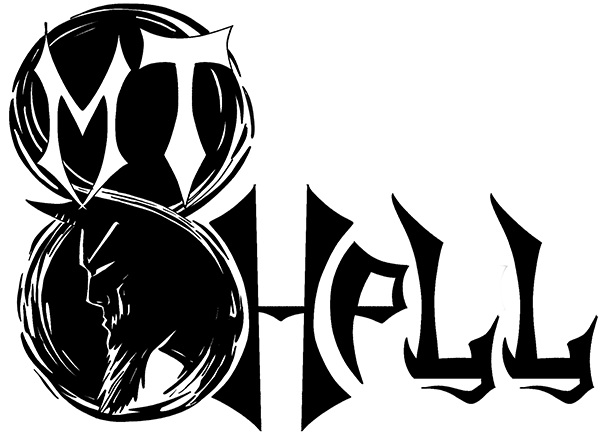
Gingerdead Man
Alright, we’re watching Gingerdead Man today. Released in 2005 and starring Gary Busy, this should have been a wild ride. I was excited to watch this movie.
Now, I’ve watched Gingerdead Man, and I feel disappointed. Like, thinking you’re going to eat a warm, homemade chocolate chip cookie and instead getting a dry, stale raisin cookie.
Let’s discuss.
The Story
Our story starts with a tense scene in a diner. A serial killer named Millard Findlemeyer, played by Gary Busey has a family trapped under a booth. He kills the father and brother, but leaves the daughter, named Sarah, alive to testify against him. This leads to his execution.
One year later, Sarah and her mom are running the family bakery together. But oh no! A rich redneck named Jimmy and his spoiled daughter Lorna want to open a restaurant across the street. And they don’t want Sarah’s dingy bakery across the street.
I can think of about fifteen ways off the top of my head that a restaurant and a bakery could have a symbiotic relationship that would make both a butt-load of money, but what do I know?
Jimmy offers to pay Sarah to close the bakery. And she considers it because she’s just so sad about losing her brother and dad. Her mom’s having trouble with alcohol, too.
But then, someone delivers a vat of gingerbread flavor to the back door. Not questioning at all where this came from, because she’s a bad business owner, Sarah goes right ahead and bakes up a gingerbread cookie the size of my dog.
When baked, the cookie takes on the soul of Millard Findlemeyer and comes after Sarah for revenge.
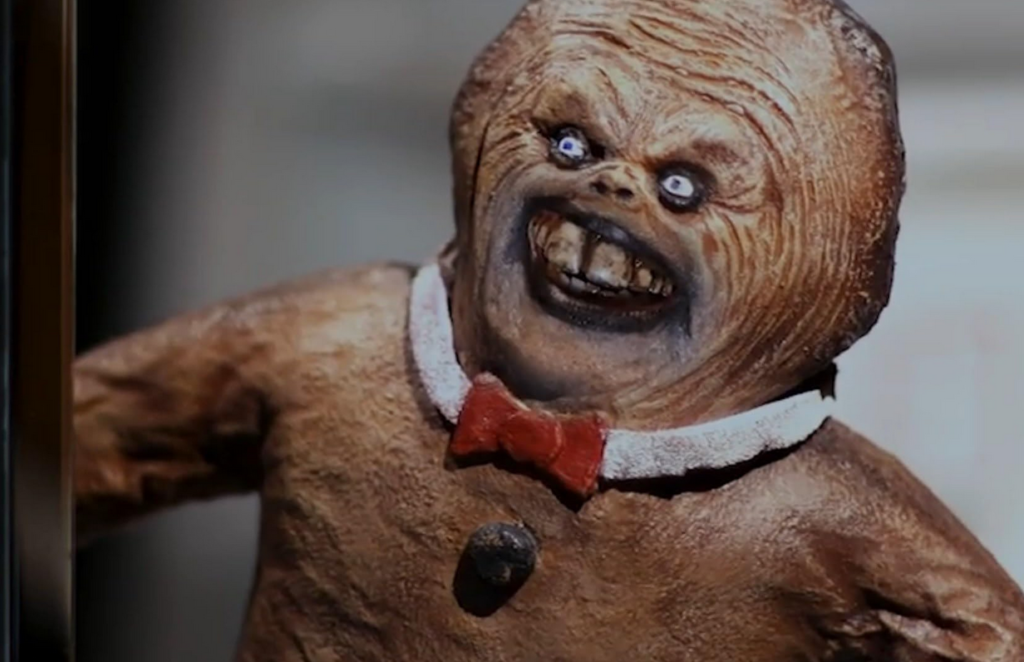
The rest of the movie involves Sarah, Lorna, and Lorna’s boyfriend Amos running around the tiny bakery trying to trap and defeat Findlemeyer. Instead of, you know, leaving the bakery and coming back with some cops.
Eventually, our plucky young adults do manage to defeat the Gingerdead Man. Or did they?
As far as I am they did, because I have no intention of watching the sequel. Because yes, there is a sequel.
What worked
I’m honestly having a hard time picking out anything to admire in this movie. It was a good premise. I was excited to see a killer cookie. And that is exactly where the creativity of this film starts and ends.
What didn’t work
This movie was just horrible if I’m being honest. It didn’t do anything right. One of the most jarring elements was the character introductions. People are just thrown in and lazily introduced. You blink and there’s some new person to be menaced by the killer cookie.
I don’t think I’ve ever complained about character introduction, because it’s never upset me so much.
The effects also deserve a special shout-out for being just gross. The shots are cut so that we never actually see a hit land. Because that would be too hard, I guess. Near the end of the film, a character tries to eat the Gingerdead Man to death. And it is so clear that he’s eating a jelly sandwich on white bread, you can actually see the crust!
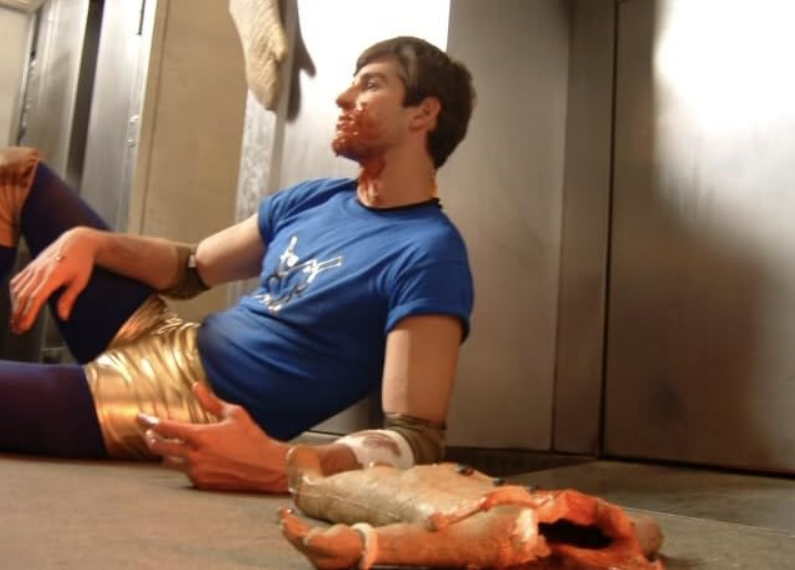
Finally, though, I want to discuss the real sin of Gingerdead Man. It lacks all charm. The baking in the movie looks gross. The bakery is dingy and awful. The music is horrific.
And this could have been a charming holiday horror! The premise of the film is a killer gingerbread man. We should have seen him drowning people in frosting, cutting people with candy canes, and replacing people’s eyes with peppermint candies. Instead, we had him killing people with guns, knives, and a car.
He ran someone over with a car. Please, somebody, tell me why that makes sense.
In the end, Gingerdead Man is just insulting. At the top of this post, I compared this movie to a dry, stale raisin cookie. And I mean that.
You see, I can’t help but compare Gingerdead Man to Jack Frost. Jack Frost was a warm, homemade chocolate chip cookie of a movie. It might not be delicious, but not everybody can bake. But if you eat a bad homemade chocolate chip cookie, it’s still a nice experience since you know someone put effort into making it for you. Somebody went into the kitchen and did their best to make something good for you to enjoy. So even if they messed up, it’s still kind of good.
Gingerdead Man is like a cheap, dry stale raisin cookie that was bought at a store. No one put any love into it. It’s not made with ingredients we like, and it’s insulting to serve to people you care about.
And that’s the real problem with Gingerdead Man. There is no love in it. It was a lazy, cliche movie where no one was putting in any effort. Not the actors, not the effects team, and not the writers. No one involved in making this movie cared about it.
So, why should we?
 (1 / 5)
(1 / 5)
Movies n TV
Wheel of Time A Question of Crimson Is a Political Espionage Delight
Episode two of Wheel of Time felt like the beginning of a long journey. Stories are unfolding, lives are changing, and blood is spilling.
Let’s discuss.
The story
We begin this episode in the past with Elayne’s mother, Queen Morgase. It turns out her rise to the throne was a bit, shall we say, cutthroat. So when she shows up at the White Tower, Siuan is concerned.
She might have reason to be, too.
Meanwhile, Rand, Egwene, Moiraine, Lan and Aviendha are in the Spine of The World. As they travel through some of the most breathtaking lands I have ever seen on a TV show, Egwene is plagued with nightmares. We think at first that’s just her trauma working itself through her system. But we soon find out that it might not be that straightforward.
Finally, Perrin returns home to heal after his hand is almost cut in half. But when he gets there he finds the town has been infested by Children of The Light. And they’re looking for him.
What worked
There was something heartwarming in this episode about political espionage and choking religious persecution. And that is Elayne’s relationship with her family.
I have consumed a lot of fantasy content with royal families. And I have never once heard a princess call her mother ‘Mum’. I’ve never seen royal siblings get along. And I have sure as hell never seen a princess have a good relationship with her step-parent.
This was refreshing. Even though Queen Morgase is kind of a horrible person she seems like a good mother. And that’s an unexpected delight.

Of course, this is just one storyline among many. And while this can sometimes be overwhelming, in this case it wasn’t.
I’ll be honest, some of these storylines are going to drag for me. I know this because I’ve read some of the Wheel of Time books and I have an idea that not all the characters exactly pique my interest.
No one likes all the characters. No one likes all the storylines. While I am here for the political espionage between Queen Morgase and Siuan, not everyone likes it. While others might be fascinated with Selene trying to win Rand back, I couldn’t care less.
Having multiple storylines keeps everyone’s attention better. So long as things don’t get out of hand. Things can easily get out of hand. But this seems to be managed well.
So far.
What didn’t work
As I mentioned above, I’m not thrilled with Rand’s story at this point. And while it’s fine to not like a storyline when there are this many to choose from, it’s not fantastic that the one I like the least is the one involving our two main characters. And anytime we were with the team at the Spine of The World, the only thing that brought me joy was Moirain’s hat. It reminded me of Stockard Channing’s hat in Practical Magic.
The problem is that Rand is Charlie Brown with controversial magical powers. He is boring, serious, and pessimistic.
And yes, I understand that he has a heavy emotional burden and he’s the Dragon Reborn and that’s quite taxing and all. But let’s be fair, there isn’t a single person in this show that doesn’t have a heavy burden. And most of them manage to be fun occasionally.

All that being said, this episode of Wheel of Time did exactly what it needed to do. It set up conflicts at each of the three locations. It established emotional ties between the characters and the events. And it established goals for everyone.
This was, in short, a solid episode. Not groundbreaking, not mind-blowing or life changing. It was simply good. It was entertaining and moved the plot forward.
Well done.
 (3.5 / 5)
(3.5 / 5)
Movies n TV
Wheel of Time Returns With A Bang
Wheel of Time is back for season three. There are mixed feelings regarding this. Last season, there were some serious pacing issues. And some serious sticking to the book’s storyline issues. But we’re two seasons in, and we don’t give up so easily. So let’s dive into episode one, To Race the Shadow.
By the way, I highly recommend watching this episode with the subtitles on. You’ll see why.
The story
We begin this episode with Liandrin facing a trial of sorts for her rampant betrayal. She does her best to gaslight her Aes Sedai sisters into thinking that Siuan Sanche is the real traitor.
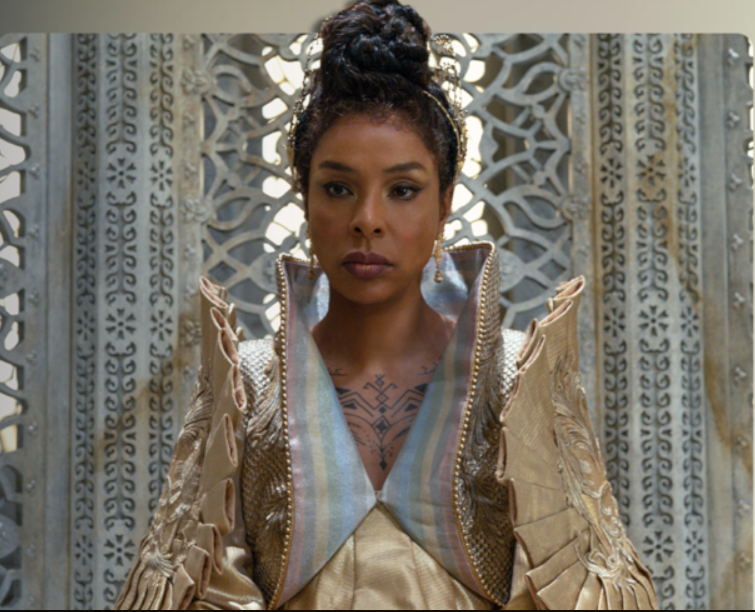
When that doesn’t work, she reveals how many Black Aes Sedai have actually infiltrated the tower.
Spoiler, it’s a lot.
In the aftermath, our whole team gathers to drink and enjoy one night of relaxation before they head out to the Tear to form an army for Rand. All is going well until they’re attacked by myriad creatures and a sentient axe.
What worked
This episode was long. It had a run time of an hour and eleven minutes. And a lot of that run time was spent in heavy dialog scenes.
Fortunately, these were well-done scenes.
If you’re going to have a lot of talking scenes, there are good ways and bad ways to do it. Last season, we saw lots of examples of the bad way to do it. But this episode did it well. For one thing, other things were going on while conversations were taking place. The characters are drinking, playing games, walking through an interesting city. And the scenes themselves didn’t stretch out. They weren’t repetitive. We heard what the character had to say, then we moved on.
It was also nice that the point of these scenes wasn’t just info dumps. We had character development. We had romantic interactions. We had plot development and foreshadowing.
Overall, this episode felt like what it was. A moment of calm before a storm.
Taking a step back, I’d be remiss if I didn’t address the fight scene at the start of the episode. Because it was epic.
The magic looked amazing. The martial arts that went along with it looked fantastic. The costumes were beautiful. It was just incredibly fun to watch.
More than that, it was emotional. We lost some characters in that fight that were important. And it was clearly emotionally shattering for many of our characters, who found themselves betrayed by people they trusted.
So many of them.
It was a great way to open the season.
What didn’t work
Despite that, this episode wasn’t without its flaws.
First off, there were a lot of dialog scenes. And they were good scenes, as I’ve already discussed. But it was one after another after another. And when your episode is, again, an hour and eleven minutes, it’s maybe a little much to have so much chit-chat. Couldn’t some of these conversations, important as they were, have been moved to maybe another episode?
Finally, I want to talk about Egwene’s travel through the arches.
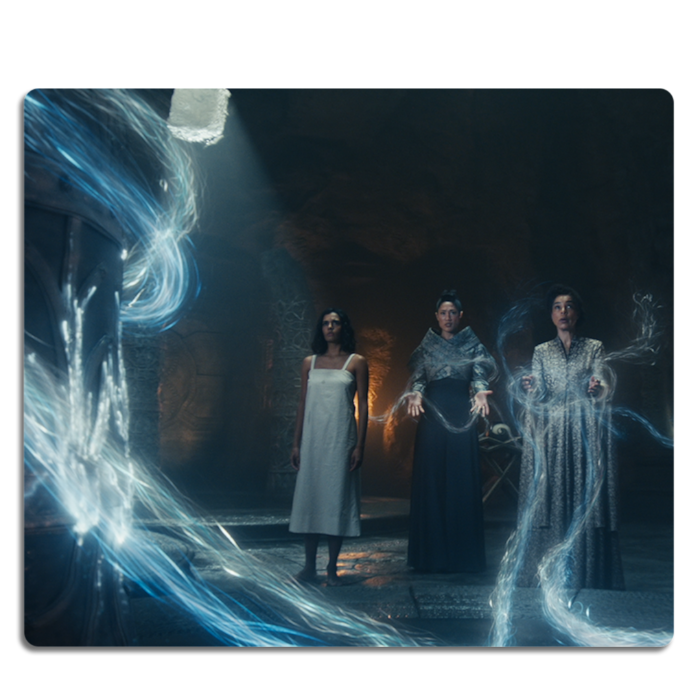
I feel like maybe there were some deleted scenes here. Because there must have been more to that visit than what we saw, right?
We could have seen Egwene battle Rand. That would have been badass and emotionally devastating. We could have seen her with a quiet life with Rand back home at the Two Rivers. We could have seen anything except for the quick clip of Rand in a bloody river, followed by Egwene being shoved back out in a bloody shift.
Bad job. But at least it wasn’t an extended scene of Moiraine collecting bathwater, and then taking a bath while looking sad. If we’d started this season with another scene like that, it might have broken my brain.
Amazon dropped the first three episodes at once. So we’ll be back soon to talk about episode two. See you then.
 (4 / 5)
(4 / 5)
Movies n TV
Entertaining as hell: Eight Legged Freaks (2002) Review
Early 2000s is a special era for the industry. It accepts the cheesiness and corniness of movie making, in turn producing some gems in their own right. Eight Legged Freaks starring David Arquette and young Scarlet Johanson is a horror comedy about giant spiders who overtake a small town. As crazy as that premise sounds, the movie surprisingly has a ton of heart and is super entertaining. Let’s review, shall we?
Plot
We start Eight Legged Freaks with a shot of toxic waste spilling into the water supply of Joshua, a spider farm owner. He is friends with Mike, one of our protagonists, who is a science geek and a spider enthusiast. Mike notices something quite right upon visiting Joshua, but no one takes him seriously. We are then introduced to the rest of the crew. Mike’s mother Samantha, the town sheriff, is too busy chasing Ashley, his sister, who is dating the town mayor’s son Bret (something Samantha does not approve of). We also have Chris, who returns to the town to save his father’s legacy in the town mines. He has opposition from Wade, Bret’s father, who wants to use the mines for his business ventures. Lots of drama going on that will only get juicier once the spiders get loose.
The creepy crawlies quickly dispose of Joshua and make their grand appearance after Ashley rejects Bret’s advances, abandoning him in the middle of a desert. A glorious chase sequence ensues as the spiders make their way towards the town, wreaking havoc on its residents. In a true horror fashion (which the movie acknowledges), it takes some convincing from Mike and then from Samantha for the town to take the threat seriously. The tongue-in-cheek style of narrative adds the comedy aspect to a movie that would otherwise burn out fairly quickly.
The remaining characters hide out in a shopping mall as it’s the only somewhat sturdy building in the area. This doesn’t last long as the spiders break in, forcing them to run through the mines. Their resources to fight the creepy crawlies off are limited as the methane gas doesn’t allow them to use firearms. Such conditions require resourceful thinking from Chris, who uses perfume to fend off the leader of the spider group and save himself during the climax of the movie.
Character dynamics are not forgotten once the action kicks in. We have Chris confessing his long-term feelings for Samantha which she knew all along, which provided some comedic relief. Bret also reunites with Ashley and apologises for being an asshole. Mike finally gets the appreciation he deserves as his knowledge saves the townsfolk more than once during the whole ordeal.
We end the movie with the town’s radio show person telling the story as an urban legend during his segment. This brings it into question – how much of it happened the way he said it did? We can only guess…
Overall thoughts
Eight Legged Freaks is a fun creature feature with some self-aware commentary on genre tropes that doesn’t take itself too seriously. The acting is good, the pacing fitting and the characters are likeable enough for you to want them to make it through. Definitely a must watch, if you don’t suffer from arachnophobia, that is.
 (5 / 5)
(5 / 5)

